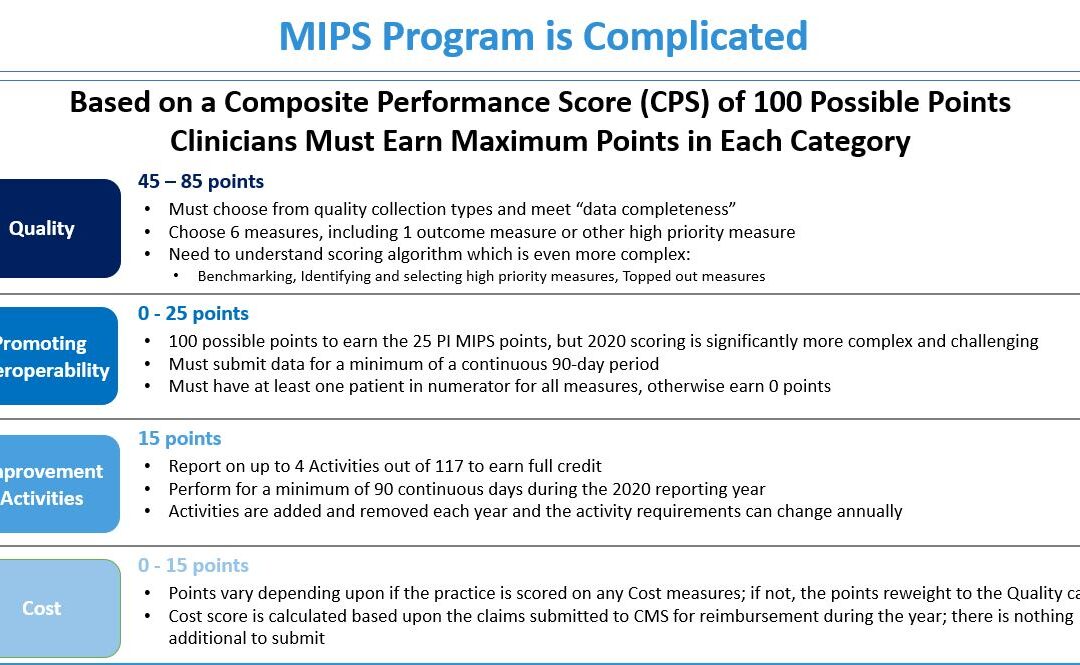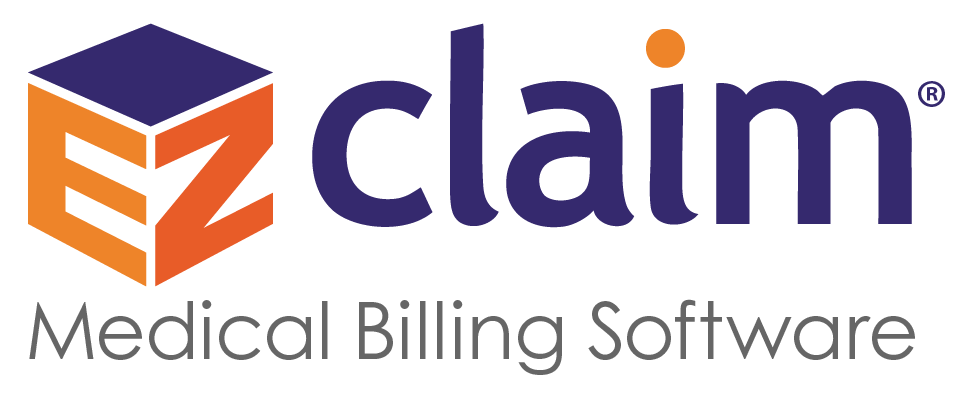
Aug 11, 2020 | ChartSwap, Partner
An online “Health Information Exchange” (HEI) can be the answer to managing the release-of-information (ROI) process completely digitally.
Many healthcare providers are spending a significant amount of time and money on fulfilling requests for medical and/or billing records. Outdated and inefficient modes of technology like printers, postal mail and fax machines make up much of that cost. Time spent on having employees complete record fulfillment operation—or money spent on working with third-party release-of-information (ROI) companies—add significantly to strains on manpower and/or budgets. Then add in the money spent on postage and in-office time spent responding to status calls, and you have a significant cost center that is not benefitting your business.
In today’s digital world, both businesses and consumers expect efficient, safe, online transactions. While the healthcare industry had a longer grace period for digital transformation initiatives, a new survey reveals that 75% of people now expect the same service from healthcare organizations that they receive from other businesses. This is driving many organizations to re-think the current, highly ROI process and seek a simple, secure, and more cost-effective digital ROI solution.
Utilizing an online Health Information Exchange may be the answer to your problems. By utilizing the FREE proprietary software that the country’s fastest growing HIE, ChartSwap, healthcare entities can manage the ROI process completely digitally in a HIPPA- and HITECH-compliant, SOC 2, Type II-certified and conveniently cloud-based environment. In addition to eliminating the need for paper, printers, postage, and other unnecessary and inconvenient expenses, ChartSwap allows records providers to conduct all communication with requestors 100% online without the security concerns associated with e-mail.
ChartSwap users set their own fees and can quickly and conveniently collect payments electronically via either credit card or PayPal (which includes the option for ACH transfer). Over 90% of ChartSwap requestors use online payment methods, and for the few who still prefer to send a paper check, ChartSwap handles the receipt and processing of those payments on your behalf. That means that 100% of your payments for medical and billing records will be handled by the ChartSwap platform—at absolutely no cost to you!
Using ChartSwap has been shown to improve employee productivity by 50% or more, thanks to ChartSwap’s advanced digital workflows, automatic status alerts, and fully online communication model. Additionally, the turnaround time for fulfilling records requests via ChartSwap can be as quick as two days and rarely exceeds 14 days—that’s more than 50% faster than the turnaround time on requests fulfilled by traditional methods.
To learn more about taking back control of your office’s record fulfillment operations, and turn this cost center into a profit center, visit ChartSwap today.
ChartSwap is a partner of EZClaim, a medical billing software solution. For more details about EZClaim, visit their website at EZClaim.com

Aug 11, 2020 | Administrative Safeguards, Live Compliance, Partner
Failing to implement HIPAA causes a large fine for a small-town North Carolina health services provider. They were fined $25,000 for multiple, easily avoidable, HIPAA violations for “longstanding, systemic non-compliance” with the HIPAA Security Rule. [ Note: The provider is a part of a health center that offers discounted medical services to the underserved population in rural NC, and the fines were reduced in consideration of this, but it still resulted in a significant monetary loss ].
In 2011, Metropolitan Community Health Services (Metro), doing business as Agape Health Services, filed a breach report regarding “the impermissible disclosure of protected health information to an unknown email account.” The breach affected over 1,200 patients!
In addition to the large monetary penalty, the practice is required to develop and adopt a corrective action plan (which includes two years of thorough monitoring) after the Office for Civil Rights (OCR) discovered that Metro failed to conduct a thorough and comprehensive HIPAA Security Risk Assessment and Analysis. In addition, Metro did not implement a single HIPAA Security Rule Policy and Procedure for the health center. Possibly worst of all, Metro failed to provide workforce members with HIPAA Privacy and Security Awareness training until 2016!
Patients must trust with who they share their personal, private, and protected health information. A breach such as this is obviously devastating for the patient, in addition to their doctor’s reputation. So, how can physicians ensure that they are meeting the HIPAA requirements and have proper safeguards in place to avoid this sort of breach?
First off, an accurate and thorough Security Risk Assessment and Analysis must be conducted to expose and target any potential administrative, physical, and technical vulnerabilities. Doing so highlights any major flaws in a practice’s administrative and technical safeguards, and accentuates the policies and procedures that the practice needs to implement.
In addition to that, the designated HIPAA Privacy and Security Officer must ensure that ALL employees complete HIPAA Workforce training. All employees of the practice, including the physicians, must take HIPAA training to ensure employees have a clear understanding of the HIPAA Privacy Rule and actionable policies and procedures.
So, remember, healthcare organizations and their vendors have a responsibility to be HIPAA compliant, and that starts by performing, updating, or reviewing an accurate and thorough Security Risk Assessment covering your technical, administrative, and physical safeguards. This will help uncover any vulnerabilities, and help you understand what information is being transmitted, shared, and how it is being transmitted.
TAKEAWAYS AND THINGS TO CONSIDER:
- Complete a Security Risk Assessment and establish a Corrective Action Plan that is accurate and thorough.
Remediate any potential risks or vulnerabilities.
- A Security Risk Assessment will target vulnerabilities related to what is potentially exposing Protected Health Information (PHI)
- Develop actionable policies and procedures that clearly outline disclosures of PHI
- Ensure all employees have a clear understanding of the HIPAA Privacy rule and its policies and procedures
Live Compliance provides everything you need to become and maintain your organization’s HIPAA compliance requirements. All policies and procedures can be edited and shared directly with staff from your staff portal. Training are delivered and monitored within your portal, can be customized, role-based, and be accessed anytime and from anywhere. You can also easily send and monitor HIPAA training with one click.
Failing to implement HIPAA can cause tremendous problems and use precious resources and time to implement. Live Compliance makes it 10X easier than trying to do it on your own.
So, take advantage of Live Compliance’s FREE Organization Needs Assessment to understand your immediate compliance needs. For additional details, e-mail Jim Johnson (at jim@livecompliance.com), call (980) 999-1585, or visit their website at livecompliance.com/oa
Live Compliance is a partner of EZClaim, a medical billing software company. For more details about their solutions, visit their website at ezclaim.com.
[ Written by Jim Johnson, President of Live Compliance ]

Aug 11, 2020 | Features, Medical Billing Customer Service, Partner
Which is the BEST kind of Medical Billing Software? “All-in-One” or “Specialized”?
When considering WHICH medical billing solution they should use, practices wonder which is best, an “all-in-one” solution or specialized software. Well, the following are a few important pros and cons to consider when making a choice between these solutions.
ALL-IN-ONE:
An “all-in-one” system tries to provide a single, comprehensive solution that offers functionality for the major areas of the practice—Practice Management (PM), Electronic Medical/Health Records (EMR/EHR), and Revenue Cycle Management (RCM)—accessed from one central point. It has features like clinical notes, patient information, and history, diagnosis and treatments, scheduling, appointment reminders, reports, patient educational resources, as well as a medical billing section.
PROS:
• Most of what a practice need is included in the system
• There is no need to be concerned with multiple integrations or vendors
CONS:
• Tends to have a higher ‘entry’ cost
• Usually designed for the “middle-of-the-road,” therefore sometimes doesn’t properly address specific needs of a practice
• Sometimes, the practice is left paying for additional customizations to fit their particular needs
SPECIALIZED SOFTWARE:
Specialized medical billing software, on the other hand, is particularly programmed to maintain billing details of tests, procedures, examinations, diagnoses, and treatments conducted on patients. However, many specialized software providers extend their scope to include features like practice management, scheduling, and other administrative and clinical functions (that are generally a part of EHR software systems) by partnering with other specialty software companies—creating a “best-in-class” solution.
PROS:
• Integrating multiple “best-in-class” software packages—each taking a much more focused approach—creates an offering with much more in-depth capabilities
• Usually are more ‘nimble’ in responding to industry and regulatory changes
• More ’scalable’ in supporting the growth of a practice
CONS:
• Most of the time the practice has to deal with multiple vendors
CONCLUSION:
Where “all-in-one” solutions offer a wide breadth of capabilities across the business, they usually also lack focus, depth, and sophistication. “All-in-one” solutions are usually only efficient in one area, with the other areas tend to be ‘compromised’ and not fully developed. Then, when it comes to flexibility, they tend to be slow to adapt to changing practice needs.
Specialized software, however, typically offer a more efficient experience, with each ‘component’ streamlined and designed with a specific purpose in mind. Their focus on limiting the software scope makes them flexible and easy to use.
EZClaim—a leading software package in medical billing and practice management—has made it easier for the medical practice to have the benefit of a “all-inclusive” solution. They have created the best of both worlds by taking on the responsibility of integrating the “best-of-breed” into a harmonized “best-of-class” offering that allows the practice to pick and choose for their specific needs. The seamless integration of partner products and services ensures the practice does not have to give up robustness and flexibility for a simplified “all-in-one” solution, and it further enhances the practice’s workflow.
As a specific example, one of EZClaim’s partners is TriZetto Provider Solutions (TPS), a provider that seamlessly blends claims processing with revenue management and analytics software, so the practice can get paid faster, and more accurately.
Today, the practice can get the benefit of all the power and ease of use of EZClaim’s medical billing software and all the access and security that is needed when dealing with personal records by using TPS—which includes patient access, claims and denials management, patient financials, and advisory services.
The powerful integration between EZClaim and TPS efficiently adds functionality to the practice. Now the practice can gain deeper insight into the claim lifecycle, and take the proper steps to improve the overall health of the practice. The right ‘integrated’ solution makes all the difference!
So, if your practice needs more confident billing, after payments, and more informed decisions, but the power of EZClaim and TPS to work for your practice with the integrated suite of revenue cycle solutions.
In addition to TPS, EZClaim has tightly integrated a variety of of ‘components’ to be able to offer an “all-inclusive” best-in-class solution for a medical practice’s needs: Electronic Health Records (EHR), Clearinghouse, statement and payment services, HIPPA compliance, claims scrubbing, appointment reminders, and inventory management. It has partnered with a variety of providers like QuickEMR, BestNotes, and PracticeFusion [ Click here for an entire list of EZClaim’s partners ].
It is important to note that an “all-in-one” solution does not usually include the Clearinghouse portion that TPS offers. The powerful integration between EZClaim, TPS, and EZClaim’s EMR partners, efficiently adds functionality to ANY practice!
If you are considering the best course of action to meet your practice’s needs, consider using EZClaim by downloading a FREE TRIAL or contact one of their product specialists today to explore all the options for how to best solve your practice’s operational challenges, and grow your business.
For details and features about EZClaim’s medical billing software, visit their website.

Jul 14, 2020 | BillFlash, NexTrust, Partner
The SIX KEYS to sustaining your practice through the COVID-19 pandemic are online payments, Telehealth, automation tools, cyber protection, financial aid, and a good patient experience.
When Coronavirus first started to impact medical practices across the country, providers quickly put temporary solutions in place to ensure they were still able to see patients safely. As the pandemic endured, some of these “temporary” solutions became a “normal” part of doing business. While we can’t predict exactly how COVID-19 will affect us in the future, one thing is becoming clearer every day: Some of the changes that have been made in the past few months will shape how healthcare is managed after the global health crisis is over.
So, it’s time to start thinking long-term with your COVID-19 strategy. Here are six ‘keys’ for sustaining your practice right now that will continue to be important after the pandemic is over.
1. ONLINE PAYMENTS
Most businesses already process a good amount of their payments online (including EZClaim), but healthcare has been slow to adapt in this area. Practices no longer have the luxury of taking their time adopting digital payment options. It’s time to give patients what they’ve been wanting for years: the ability to pay their bills online.
Because the pandemic is still with us, contactless payments have surged. No-touch payments are an easy way to reduce the spread of germs, and most people already have the tools they need to complete these types of payments: phones, computers, and credit cards.
Online payments are encouraged even when you’re meeting patients in the office. EZClaim customers can easily facilitate this with LinkPay. The process is easy and can be done once an appointment is made.
Here’s LinkPay in three simple steps:
1) Create a customized payment link with the required amount
2) Email or text the link to the patient before their visit
3) Patient pays the required amount, which is immediately confirmed and processed
COVID-19 demanded contactless payments for safety, but now patients now expect them for convenience. Medical practices will need online payments if they are to stay relevant in the future.
2. TELEHEALTH
Telehealth threw providers a lifeline when patients stopped coming into the office. The government acted quickly to relax Telehealth reimbursement policies so providers would be paid just as much for a Telehealth visit as they would for an in-office visit.
Congress is hoping to make these changes permanent. Whether they succeed or not, plan on keeping Telehealth as an option for your patients. Because Telehealth is not just useful during a pandemic, it’s great during normal life, too. Not all visits require an in-person encounter, and patients of all ages can benefit from the convenience of not having to physically leave their homes to get the medical care they need.
Patients have become used to having Telehealth as an option. Keeping it as an option going forward will set you apart from other practices.
3. AUTOMATION TOOLS
Chances are you are working with fewer people than normal. So, with fewer people to handle your billing and payments, your best option is to automate whatever you can.
This could mean setting up AutoPay for patients you see regularly, so they don’t have to manually pay their bill every time. It could also mean setting up a payment plan, in which a fixed amount will be paid automatically every month until the balance is paid off. It could also mean outsourcing your collections.
Automation doesn’t mean you lose control. Rather, it gives your staff more time to manage other essential operations. EZClaim customers have all of these automation options available to them through BillFlash.
4. CYBER PROTECTION
With digital tools becoming more prevalent, it is more important than ever to make sure your systems are protected. Hackers are out in full force right now, so it is imperative that you have proper malware and anti-virus software in place to protect your practice, your patients, and your employees. Do your homework on the tech companies you work with, too. Protecting your practice and your patients should be a top priority!
Of course, your staff will need to be up-to-date on HIPAA protocols, as well. Make sure you are doing everything you need to protect patient privacy online as well as offline.
5. FINANCIAL AID
Some practices are struggling financially and may need government aid to get them through the current crisis. Keep an eye on government funds that are available and stay informed on their different requirements.
If you haven’t already, consider applying for a line of credit. This is a standard operating procedure—even during normal times—and can help protect you from further financial disruptions in the future. No one knows how long this pandemic will last, so having a line of credit to fall back on during the coming months and years could be a game-changer for your practice.
6. A GOOD PATIENT EXPERIENCE
Above all, you need happy patients. That is true whether we are in a recession or not. Happy patients are more likely to pay their bills, more likely to return for future care, and more likely to recommend you to family and friends.
So, as you make some of the changes you made during the pandemic permanent, make sure you are still doing the little things to ensure a positive patient experience. These include:
• Keep wait times short
• Maintain eye contact during visits to assure patients that you care
• Be transparent about payment expectations and insurance, as well as what you’re doing to keep patients and staff safe
• Allow patients to pay using their preferred payment method
• Offer payment plans in lieu of paying large bills in one lump sum
A positive patient experience will be key in bringing your patients back to the office as the global health crisis continues.
NexTrust from BillFlash offers a variety of innovative billing and payments solutions for EZClaim customers. Visit billflash.com or e-mail them at Sales@BillFlash.com to learn more about how you can get paid more, get paid faster, and ensure you have the online tools you need to thrive during the pandemic.
For details and features about EZClaim’s medical billing software, or the other partners they have integrated into their billing solution, visit their website.
[ Written by Kathy Scott, Marketing Manager at BillFlash and NexTrust, Inc. ]

Jul 14, 2020 | Health eFilings, MIPS Reporting, Partner, Revenue
The 2020 MIPS reporting is already half done, and given that MIPS (Merit-based Incentive Payment System) is a points-based program, the goal is to earn as many points as possible to avoid this year’s 9% penalty and potentially even earn a positive payment adjustment. However, earning the 45 points necessary to avoid the penalty for the 2020 reporting period will be no easy feat. With over half of the reporting period already behind us, it is imperative you ACT NOW so you don’t find yourself in a position later in the year that you can’t recover from in terms of earning points.
With all the complexities and nuances of the program, it’s challenging to know what you can do to impact your score. Here are three critical actions to take right now so that you will still optimize your ability to earn points for the 2020 reporting period:
1. Focus on the Quality Category
There are various points available within each of the categories and the Quality Category has the most points associated with it. Based on a number of factors, the category is worth anywhere from 45 to 85 points. This is a critical category to be focused on throughout the year, so now is the time to ensure that you are tracking all relevant data so that it can be properly reported on within your submission.
2. Understand the Timeframe Requirements
Two of these categories, Promoting Interoperability and Improvement Activities, have timeframe requirements where you must perform for a minimum of 90 continuous days. These are not easy categories in which to be successful and so if you wait too long in the year you will find it impossible to put the right actions in place in order to complete the activities necessary to earn any of the points in these categories.
3. Choose the Right Reporting Methodology
Not all reporting methodologies are the same and the reporting methodology you select has a significant impact on the points you could earn. Additionally, there is strategic maneuvering that can be done throughout the reporting period with exemptions and reweighting of points that can set you up to optimize your performance and your score. Therefore, you must select a reporting partner that will help you earn the most points available and leverages technology to facilitate the ease, accuracy, and completeness of tracking and reporting to maximize your score. Reporting via a CEHRT, like Health eFilings, is the best approach because it optimizes the points that could be earned and therefore, maximizes Medicare reimbursements.
Health eFilings is a certified EHR technology (CEHRT) and the national leader in automated MIPS reporting. Their cloud-based ONC-certified software fully automates the reporting process. Because Health eFilings’ service is an end-to-end electronic solution that doesn’t require any IT resources, administrative support, or workflow changes from you, the practice will save significant time while maximizing its financial upside.
To learn more about how to properly perform your 2020 MIPS reporting, contact EZClaim’s partner, Health eFilings, so they can help before it’s too late!
For details and features about EZClaim’s medical billing software, or general information about the company, visit their website.
[ Written by Sarah Reiter, SVP Strategic Partnerships, Health eFilings ]

Jul 14, 2020 | Alpha II, MIPS Reporting, Partner, Webinar
WEBINAR: Understanding QPP MIPS Measure Specifications
Hear it from the experts! Learn how to interpret Quality and Promoting Interoperability Measure Specifications from Alpha II’s Qualified Registry auditors.
They will reveal the most common mistakes found in quality reporting and show the importance of understanding your measures. Topics include:
• Understanding denominator exclusions
• Adding required denominator G-codes
• Visit requirements
• Importance of notes
• Numerator instructions
• Special numerator criteria such as minimum day requirements
• Promoting Interoperability measure requirements and more…
Understanding QPP MIPS Webinar details:
• Date: July 28, 2020 @ 1pm (EST)
• EZClaim Link: https://alphaii.zoom.us/webinar/register/2915940667921/WN_7pUJlJs3RGSytrMoNsrYJQ







